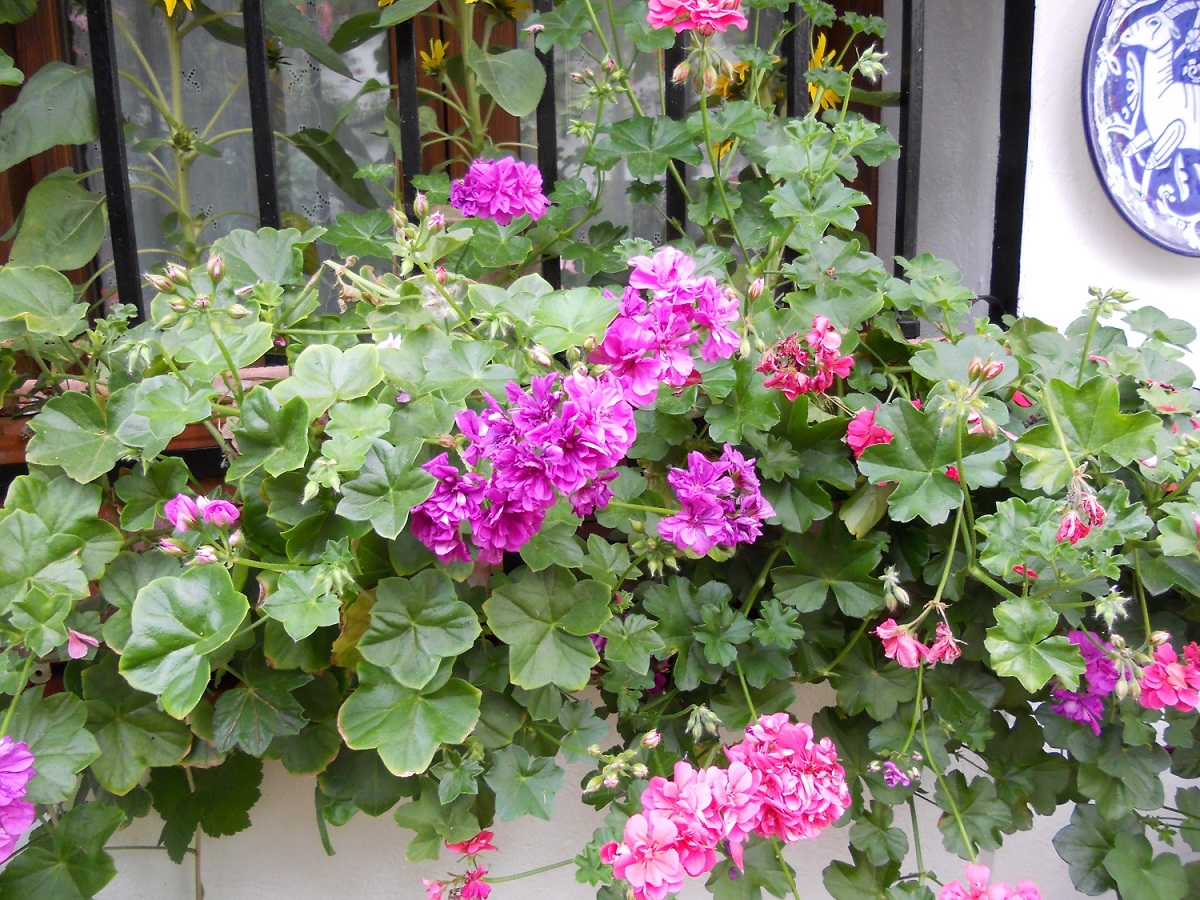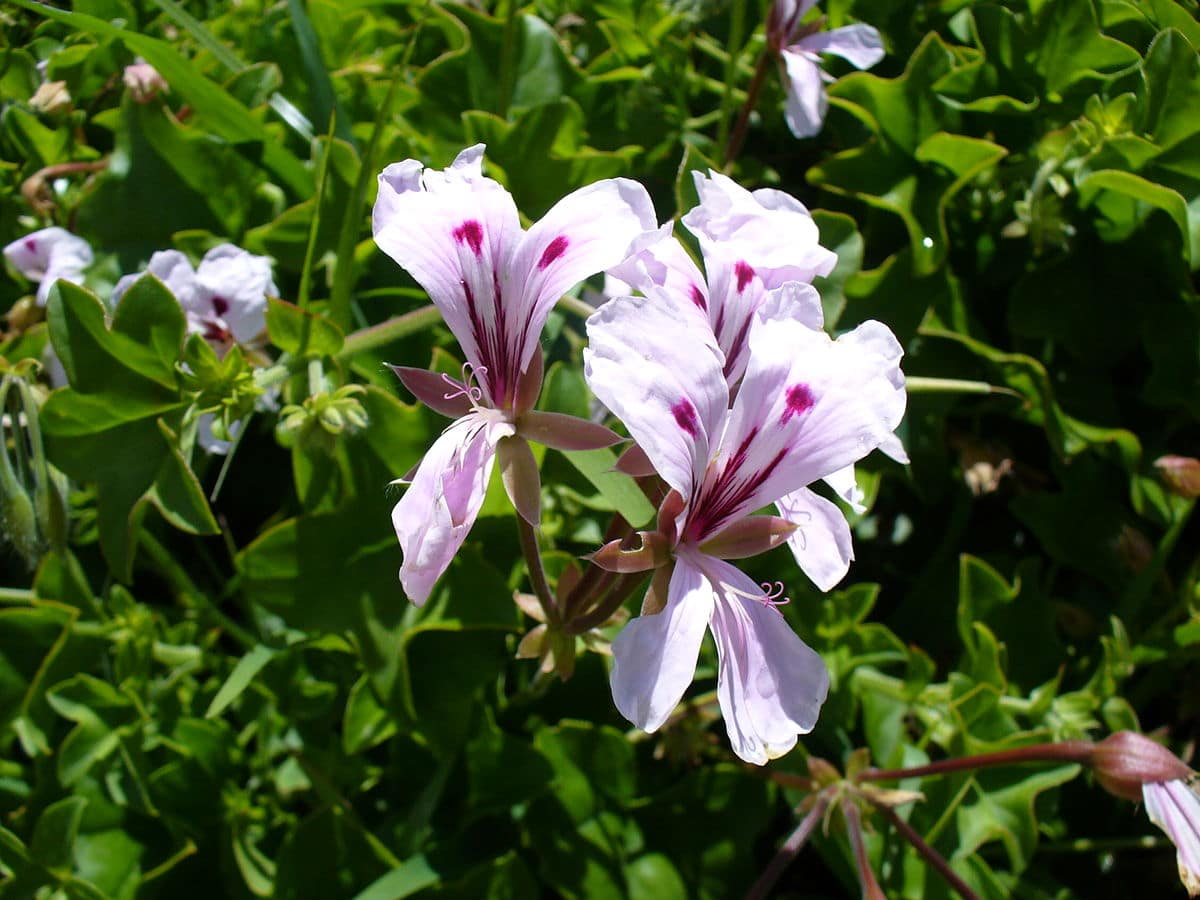
El pelargonium peltatum, also called oak leaf mallow or ivy geranium, it is a species that It is part of the family composed of the Geraniaceae; It comes from South Africa and is characterized by being the most cultivated among all those that exist of its kind.
The ivy geranium is a highly resistant outdoor plant, whose flowering takes place throughout the summer. It consists of a subshrub that has creeping, thin or hanging branches; whose leaves, a little succulent, are usually pelted and fine.
Features

Its petiole is distinguished by do not join the foil through the edge, as it usually happens in most species, since instead it is perpendicular to a specific point in the middle of the underside, shaped like ivy. The inflorescence of this species is characterized by being an umbel that, generally, is made up of about 2-9 pink flowers, which have 5 dark, striped petals.
It should be noted that the smaller leaves that the ivy geranium has, are usually edible, although have a slightly sour taste; in addition, they have great astringent properties. In regions where frost does not occur, it is common for Pelargonium peltatum to flower throughout the year.
It should also be mentioned that there are certain varieties that tend to be distinguished between them mainly due to the shape and color of their flower, as well as because of the durability of their flowering.
This species originally comes from South Africa, which allows you to have a better idea about why it usually inhabits clay soils and prefers to be exposed directly to the sun. And although it is precisely for this reason that it prefers a substrate whose pH is alkaline, it also tends to tolerate soils with more spongy and soft trace elements.
Caring for the pelargonium peltatum
El pelargonium peltatum stands out for being a species that easy to grow, which requires direct exposure to the sun or at least be partially shaded, although it should have a little protection throughout the central hours of the day during hot seasons.
This subshrub is not able to withstand persistent frosts, so that when grown in areas with severe winters, it is often necessary to ensure that you take the necessary measures to guarantee your protection against extreme cold.
It is also a species that tolerates soils that have little fertility and that do not have much humidity, although they do not support lands that are flooded or those that are too heavy due to excess water. In this sense, the most advisable substrates to achieve optimal growth and development of the species, They consist of those that are slightly loose and acidic.
Likewise, it is not advisable to enrich the soil too much, since otherwise it could favor the emergence of specimens that have larger leaves and few blooms. It is usually best to opt for a mix that is composed of both equal parts hangover sand, as well as no more than 3-4% organic matter and that it has a pH of 6,5.
Regarding the irrigation of this species, it is accurate to say that it should be watered only when the soil is completely dry; although if you want to promote its flowering, there is the possibility of subjecting the grass geranium to a slight dry period.
Likewise, it should be noted that among the care required by the species, it is necessary that occasionally let's adjust your pot to the rapid development of this plant; that is why it is essential to carry out your transplant. But before doing so, it should be borne in mind that this will put a slight stress on the grass geranium, since some of its roots could easily break during the change of substrate, so it will have to be done carefully.
The most advisable is transplant when the plant is at rest, because less sap movement will occur and any possible damage may have less impact on the grass geranium. So it is best to do it between mid-autumn and late winter.
Pruning and multiplication
This species is able to withstand pruning, including those more drastic, and then recover easily; however, pruning is usually best done at the end of winter.
However, when pruning is carried out because of a rotten stem, attacked by diseases and pests or affected in any other way, it is best to do it once the problem is discovered, so that it does not spread to the rest of the plant.
Finally, it is possible to carry out the multiplication of the species through cuttings of approximately 10cms long, which then must be introduced into pots that are protected from sun exposure and receive deep watering, and then interrupt the water until you begin to appreciate the development of the first shoots.
El pelargonium peltatum it is usually totally appropriate for its cultivation in sunny areas, inside containers, on terraces and also on balconies, so that its stems, like the flower clusters, manage to hang in the air with total freedom, generating the effect of a colorful waterfall.
Plagues and diseases

Aside from the various problems that ivy geranium might experience from misplacing (exposure to frost, low light, etc.), or due to errors in its cultivation (lack of nutrients, excess watering, etc.), this species can be equally affected by certain pests and diseases.
Among the pests that most frequently attack this plant, the most notable is usually the African butterfly, also known as the geranium fly, which comes from south africa.
This pest consists of the presence of caterpillars about a couple of centimeters, which usually attack the grass geranium by biting its leaves and piercing its stems. If you perceive that the species presents any of these symptoms, it is essential to make sure you act quickly and prune both the leaves and the affected stems and take care of applying a special insecticide.
Apart from the African butterfly, the pelargonium peltatum is usually sensitive to the presence of Red spider, mealybugs, aphids, green mosquitoes and whiteflies, as well as nematodes and caterpillars.